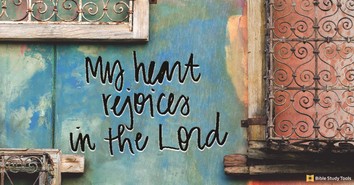Prince Caspian on Film: A Victorious Return to Narnia

Prince Caspian on Film: A Victorious Return to Narnia
AUTHOR’S NOTE: This feature contains a few minor plot spoilers.
At some point near the completion of The Chronicles of Narnia: The Lion, the Witch and the Wardrobe, the film’s director Andrew Adamson made a crucial phone call to his producer Mark Johnson. “It was the middle of the night when my phone rang,” says Johnson, “without introduction Andrew asks me, ‘Are we really ready to do another one of these?’”
Making a movie is certainly exhausting business with millions of struggles and details to handle. One could certainly understand why on the heels of his first cinematic journey to Narnia, a weary Adamson would be hesitant to go there again. Backed by Walt Disney Pictures and Walden Media, they set out to make not just a movie; they had to make a huge movie that realizes a fully fictional world inhabited by completely imaginary characters. One that satisfied both the rabid fans of C.S. Lewis’ beloved Chronicles of Narnia, but also a large segment of the movie-going world that was not familiar with these books.
Fortunately for us, their success almost three years ago with the first Narnia film and their love for these popular stories drove them to bring the second book in the Chronicles of Narnia to life: Prince Caspian. But like the second movie in any series, the filmmakers knew that Prince Caspian could not just be as good as The Lion, the Witch and the Wardrobe, it had to be better. Also like any book adaptation on film, Johnson, Adamson and the film’s screenwriters had to make some changes to the original work. Yet the structure of the novel Prince Caspian provided some unique challenges to the adaptation process.
“The Lion, the Witch and the Wardrobe is so revered by so many people, you got the sense that if you tampered with it, your were doing so at great risk,” says Johnson. “With [Prince Caspian] when we first read it … we knew it was going to be really tough.”
What Johnson and the others discovered, was that even though millions have read and enjoyed The Lion, the Witch and the Wardrobe, far fewer readers had also read Prince Caspian and the rest of the Chronicles. “So we didn’t feel quite the same pressure, as we did on the first movie,” confesses Johnson, “The success of the first gave us a bit more leeway to make some changes to the second. We were very much aware of what these books mean to so many people and want to stay true to each one them.”
Going Forward 1,300 Years
In this second part of the Narnia story, we return to Narnia 1,300 years into the future. The land is ruled by an ignoble race of men called the Telmarines, and their power-hungry ruler Miraz. The magical creatures of old Narnia have all but disappeared in the face of this human tyranny, and have not been seen in years. Upon the birth of his son, the wicked Miraz attempts to murder his nephew Caspian, the rightful heir to the throne. During his escape from Miraz, Caspian discovers the old Narnians in hiding and joins with them to take back Narnia from the Telmarines. Caspian also finds himself in possession of a magic horn—familiar to those who remember the first film—and blows it in his “hour of great need,” pulling the Pevensie children, the famous “kings and queens of old,” back into Narnia.
Narnia purists will note this slight departure from the book (which has Caspian using the horn after a long argument with the rest of the Narnians about how appropriate using the magic horn would be). Since most of Prince Caspian’s story in the book is told in flashback, the filmmakers knew that they had to change this bit of structure for film.
“Structurally [Prince Caspian] is not a movie,” says screenplay co-writer Stephen McFeely. “It’s a 180-page book. When the kids get [to Narnia] and they meet a dwarf who tells them a 60-page flashback they are not involved in, about a kid they’ve never heard of named Prince Caspian. And they say ‘it sounds like he is in trouble ... we better go do something about that.’ So we wrote a memo when [co-writer Christopher Markus and I] first got the job that said what we have to all agree on is that somebody is blowing that horn really, really early—much earlier than the book—because the kids have to get here and meet Caspian.”
For the Pevensie children, Peter, Susan Edmund and Lucy, who returned to England from Narnia at the end of the first story, only one year has passed. So their return to a Narnia that is more than a thousand years older is quite jarring.
“Because they’ve been to Narnia before they feel like they know Narnia better than anyone else,” says Georgie Henley, who plays Lucy Pevensie in both films. “They come back to a completely different Narnia… they don’t cope with that well until the end [of the film.]”
Prince Caspian the film also examines what life in England must have been like for these children who had formerly been rulers of the magical land of Narnia. Lewis, McFeely notes, did not investigate this part of the story. “What happens if you are a king or queen of Narnia for 15 years, and then you walk back through the wardrobe,” asks McFeely. “You are a kid just like when you left and you have to go back to school for a year… before you were signing treaties and defeating giants. Now you have to go back to doing homework. We wanted to show the tough times. …”
Making Adjustments in Different Worlds
It is the character Peter, who seems to have the most difficulty adjusting to both life in the real world and returning to a Narnia where he is no longer the high king. The movie thoughtfully examines his inner struggles with pride and the tensions between “king of old” Peter and Caspian, the rightful heir to the throne.
“Peter feels very self-entitled, and his ego gets the best of him,” says William Moseley about the character he portrays. “He was the High King and then he got back to England and nobody had any respect for him. Then he got back to Narnia [and again] nobody had any respect for him…”
Much like younger brother Edmund in the first film, it is Peter who now has the most profound personal journey in Prince Caspian. And with Caspian now in the picture Moseley feels that Peter learns a great deal of humility in this film. “I think leadership at the end of the day is about serving other people, and serving your country and not serving yourself. Peter had to learn that valuable lesson…. Peter has to pass Narnia on to Caspian. There is a strong leadership journey for him portrayed here.”
This strain between Caspian and Peter ups the film’s tension. “It doesn’t feel like they hate each other, they’re just at each other’s throats a bit because they’ve been through all this stuff together,” says Ben Barnes who plays Caspian in the film. “I was pleased the way it came out.”
Adamson concurs: “For Peter [the return to Narnia] was a chance to reassess himself, to prove himself… So he didn’t really want Aslan’s help because that would mean he NEEDED someone’s help. He wanted to prove that he really was the high king. So [that’s why in the story] he is sort of the last one to come around to saying ‘ok, I need help.’”
“[Edmund] is always looking out for Peter and he doesn’t really get the credit he deserves…” say Skandar Keynes of his character Edmund. “One of the recurring themes is how he is helping Peter out and Peter is just kind of ignoring him.”
And with Edmund’s character arc so severe in the first film, the writers struggled to figure out how to handle his character in this second film.
“We were always worried about Edmund because … he fixed the most about himself in the first movie,” says McFeely. “So it would be unfair to him and the audience to make him a little crud muffin at the beginning of this movie. So then what do you do, you start with a character that’s pretty noble and has a good head on his shoulders?” Edmund instead of being a character in need of redemption for his treachery, becomes a great little action hero. In addition to getting a key role in the main action sequence, Keynes gets several fun bits of comic relief that prove him to be both witty and endearing.
Breaking Up the Action
It is the humor of Prince Caspian that breaks up the intensity in an action heavy film. Several of the Narnians, many of them completely rendered on computer, provide some welcome comic relief in the midst of all the intense action and character growth. “I was actually pleased at how much the audience laughed,” says Adamson of the test screenings he sat in on. “Reepicheep the mouse is a great character in the book, and any time you have a mouse say something it instantly becomes funny.” Trumpkin the dwarf, portrayed by actor Peter Dinklage, displays a cynical sense of humor that also works to ease the film’s tension.
Like most books adapted for film, what’s more important than the details are the themes of the story. Prince Caspian not only contains the amazing special effects and action choreography you would expect in a contemporary fantasy epic, it also includes a poignant emotional journey for the characters. According to Mark Johnson, a film should always be about characters and story telling … “are [the viewers] going to be compelled to follow these characters...? It’s not about ‘does this explosion work’ it’s about ‘do we care?’
Added to the story, which will no doubt cause a good deal of discussion, is an action sequence where the Narnians attack Miraz’s castle before he has a chance to attack them.
“In the book Reepicheep suggests raiding the castle and going after the Telmarines; [it’s] not something they do in the book but something worth expanding on. I read to immerse myself in what the book was and see what came out of it in the writing process. And it evolved toward a more action-driven film [than the first],” says Adamson.
“The raid is a huge failure,” says screenplay co-writer Christopher Markus. But we wanted to give Peter that [scene], so he can come across as stiffly heroic … we really wanted to test his mettle and break him a little bit so he could build himself back as a person.”
By all accounts, C.S. Lewis’ step-son and guardian of the Lewis estate is pleased with this second film, telling Christianity Today in a recent interview that although Prince Caspian is a poorer book than The Lion, the Witch and the Wardrobe, it ended up being a better movie.
This success is largely due to Adamson, Johnson, et al and their reverence for the themes of the source material.
Going Back and Moving on
“I grew up in Papua New Guinea and that’s a country that has gone through an awful lot of change in the last 22 years," says Adamson. “I’ve never gone back there in part because I know the place where I grew up doesn’t really exist anymore. So [like the Pevensie children] I related to the sense of loss of not being able to go back to something that you grew up with. Like the old saying 'you can’t go back to your childhood.' That’s what [the Pevensie children] are going through … going back to a place that doesn’t exist and having to accept it and move on. So as much as I wanted connection I wanted the audience to feel that sense of loss as well.”
Any additions or structural changes to the story support the themes of the book nicely, including making one famous sequence with Aslan, rendered here potentially in a dream. Says Adamson: “There is a problem there that you can get away with in the book because the story is told in retrospect … Aslan is there and he doesn’t do anything. But we had a problem with that cinematically because once you show Aslan, if you don’t have him do something people are going to ask ‘Why is all this happening? Why doesn’t he do something.’ It became really hard to see how this magnificent creature came along and hung out with the kids, and not do anything to stop all this carnage.”
At its core, Prince Caspian is about belief verses doubt, a theme familiar to those who know the work of C.S. Lewis. The Telmarines don’t believe in Aslan and the old Narnians. Lucy sees Aslan but her siblings don’t believe her at first.
“You believe, then you see,” says Will Moseley about Narnia. “The analogy is there that Aslan represents God. People say every day ‘if God is there why can’t I see him.’ Peter, Susan and Edmund say the same thing, ‘why didn’t I see him, he is an unbelievably huge lion why can’t I see him?’ Because they don’t believe. When Peter feels remorse about his sins, then the magic starts to happen. Almost like you open yourself up to believe, then you can see. I don’t think it has anything to do with aging … it's more to do with your strength in belief.”
Starring Peter Dinklage, William Moseley, Anna Popplewell, Ben Barnes, Georgie Henley, Skandar Keynes, Prince Caspian opens in theaters nationwide on Friday, May 16, 2008. Click here for more information.
Originally published May 14, 2008.





